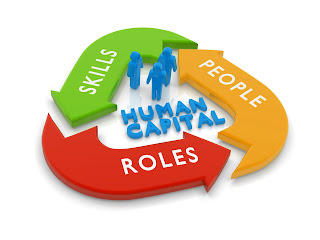If you
expect to attract and retain the best people, you must have market competitive
pay. Additionally, you have to be willing to accept some level of employee
turnover. The key is to design your pay so that you have
targeted turnover;
i.e. you induce turnover of low performing personnel while re-enforcing a
culture of high performance, enabling you to retain top performers. This is why
every company should consider linking pay to performance.
The problem
for many companies is the minimal spread between high and low performers. Most
companies design their pay around a merit matrix that looks like this:
| Performance Level |
Highest |
Above |
Below |
Lowest |
| Exceptional |
3.5% |
3.5% |
3.0% |
3.0% |
| Exceeds Expectations |
3.0% |
3.0% |
3.0% |
3.0% |
| Effective |
2.5% |
2.5% |
2.5% |
2.0% |
| Development Needed |
2.5% |
2.5% |
2.0% |
2.0% |
| Unacceptable/Poor |
2.5% |
2.0% |
2.0% |
2.0% |
In the above
example, the spread between the best and worst performers is a mere 1.5%. In
today’s world where companies are fighting to attract and retain top talent,
you must be much more aggressive with your merit matrix so that it looks more
like this:
| Performance Level |
Highest |
Above |
Below |
Lowest |
| Exceptional |
6.5% |
5.5% |
5.0% |
4.0% |
| Exceeds Expectations |
6.0% |
5.0% |
4.0% |
3.0% |
| Effective |
5.0% |
4.0% |
3.0% |
2.0% |
| Development Needed |
2.0% |
1.0% |
0.0% |
0.0% |
| Unacceptable/Poor |
0.0% |
0.0% |
0.0% |
0.0% |
In this
example, people who don’t perform get no increase. This sends a strong signal
to everyone that performance matters and for those who do perform, you will get
a serious merit increase. This is one of the most powerful statements any
company can make when it comes to retaining the best people. You should also
think about the limited money you have to spread around. You want to allocate
your limited resources to those people who deliver results. A merit matrix that
has distinct differences between low and high performance will do more to
communicate and create a culture of high performance than any speech or memo
you will issue.
“Variable pay budgets and spending have
nearly doubled in the last 20 years, subsequently emerging as the
pay-for-performance vehicle of choice now and for the foreseeable future. In a
more robust job market, competition for talent exists in every sector. As a
result, we are seeing industries that have traditionally shied away from
providing bonuses, such as agriculture, higher-education and the federal
government, realizing they must establish variable pay programs to compete for
and retain the best talent.” - Ken Abosch, Compensation Leader for Aon Hewitt.
Trying to
retain the best people is becoming increasingly difficult. According to a 2015 survey
conducted by WorldatWork, over 80% of the people surveyed indicated they plan
to leave their job. Contrast this to five years ago when the percentage was
60%. High performers are not going to stick around for the usual 3% raise while
others get 1%.
A final
point concerns the traditional performance review. If you link pay to
performance, you need to rely more on 360 degree feedback that has some
anonymity. This provides an objective, open and honest review process that
serves as your basis for administering your merit matrix. Additionally, your
review process has to be on-going and not just once a year. It should be a
cumulative reflection on how well someone has helped the company meet
department and company goals. And the review process should be both
quantitative and qualitative. For example, the Marketing Manager was able to
help the company meet its sales targets (quantitative), but he also mentored
and grew the capability of our marketing team (qualitative). If you can have a
robust back-end review process coupled with a serious merit matrix (as
described in this article) and combine this with a competitive benefits package,
then you have established the foundation that should enable a high performing workforce.
"It is very difficult, but not impossible, to put a price tag on losing key people and their smarts. As if to emphasize the intangible yet dire nature of these costs, some executives were unable to provide a dollar figure, but simply responded 'incalculable' or 'priceless.' So even if you can't quantify the costs of knowledge loss, you might agree that the cost is often a lot, enough that you would like some options to avoid or minimize these costs. Despite the acknowledged threat, a surprising number of organizations are doing nothing or little about it." - Critical Knowledge Tools by Dorothy Leonard, Walter Swap and Gavin Barton
Download PDF Copy of Article
















































